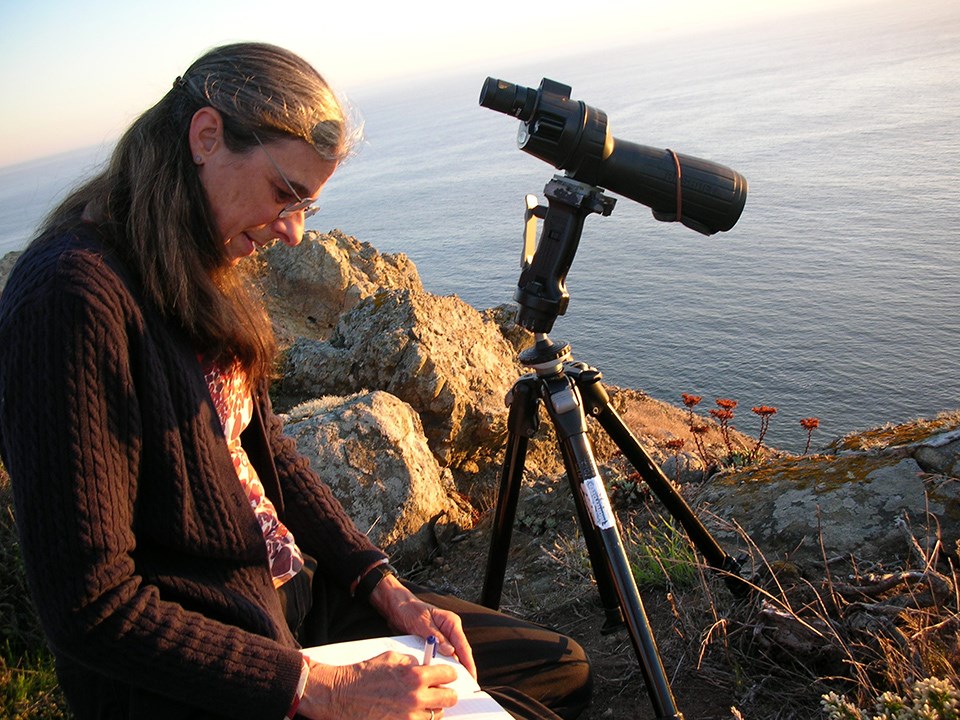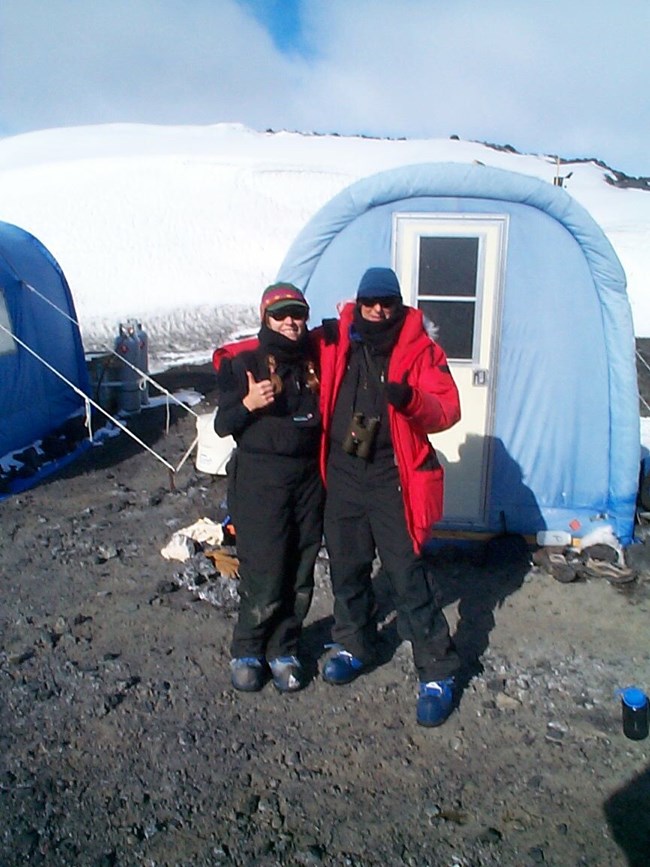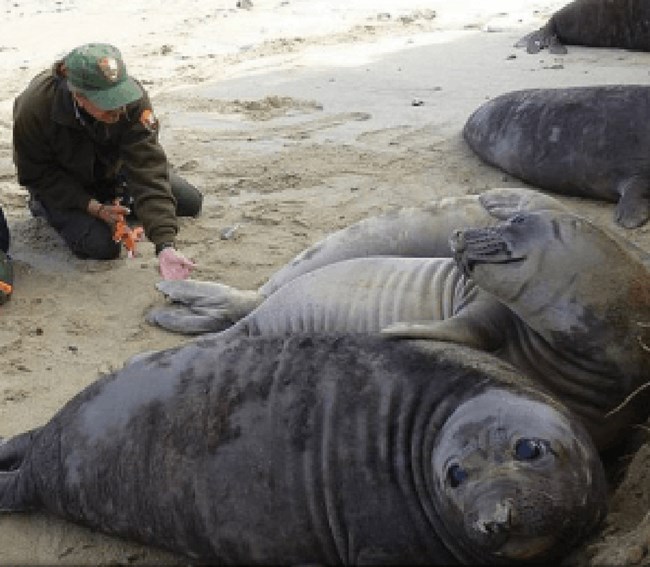Last updated: June 17, 2020
Article
Scientist Profile: Dr. Sarah Allen, Marine Ecologist and Science Program Lead

NPS
The Spark of an Impactful Career in Conservation Biology
“As I suspect it is for many people, my interest started as a child. When we spend time in nature as children, it’s easy to be in awe of what we see; to feel the wonder of it all.
My focus was the marine system, especially birds and mammals. By the time I got to high school and college, I gravitated towards classes that had that kind of information.
I struggled in what I wanted to do. I had a sense, but I was very lucky with my mentors. (Sarah’s mentor was Starker Leopold, son of conservationist Aldo Leopold.) I had people that encouraged me and showed me how to make my interest into a career. Now I want to give back to the next generation. I put all of my energy into creating clear pathways for them to pursue science.”
Her work now: Connecting Academic Scientists to National Parks
“I have a dual role as a Science Program Lead for the National Park Service in the Pacific West Region and the Research Coordinator for the California Cooperative Ecosystem Studies Unit. I look for opportunities to elevate the availability of science for the region, and leverage scientists in the UC system to come and work in National Parks. If a park has a need, I help them work through the university pathways to fill that need with the right scientist. These days, I’m doing more coordination of research in the parks rather than conducting research myself. But back in the 1990s, things were different. I began my career in the National Park Service in 1993, just as the Inventory & Monitoring program was getting started, and before it was funded. I became a wildlife biologist for Point Reyes National Seashore in 1995, switched to a park science advisor role, and was eventually also assigned as the acting San Francisco Bay Area Network program coordinator. Soon after, I had the opportunity to spend two winter field seasons in Antarctica."

Lessons from Studying Penguins in Antarctica
“My previous experience using radio telemetry and GIS helped me land a spot on a research team lead by a colleague on a National Science Foundation grant. I took a leave of absence from the park service and spent a couple of months in Antarctica, mostly in a tent near the penguin colonies.
“Penguins are like a bellwether of changing climate because they are closely linked to pack-ice. At the time there was an iceberg that had broken loose, and it appeared that their foraging was changing in response to this event and the changing climate. We were looking at the penguins not just to study penguins, but to learn about the arctic ecosystem as a whole and how it might be changing.
“The scale of Antarctica made me realize that I was a sesame seed on the rye bread of life: I saw how small humans are on the larger landscape. But we have a big footprint. As conservationists, we look at how that footprint is manifested. We look at multiple things to see how they tell a story.
“I remember researchers using a 20-ft long sample core taken from ice to see how air quality had changed over thousands of years. While I was down there, a big issue was the growing hole in the ozone layer. Eventually scientists found that it was affected by CFCs (chlorofluorocarbons, chemicals once used in aerosol sprays and other manufactured materials). That hole in the ozone layer is now shrinking because we’ve banned and reduced those chemicals.
“There was more than 40 years of monitoring data for those penguins. That data eventually played a role in the creation of a Marine Protected Area for the Ross Sea, one of the last seas on Earth that remains relatively unaffected by human activities.
“To me, those developments demonstrated how powerful long-term data sets can be for informing policy and conservation. My experiences in Antarctica energized me to advance long-term monitoring in the Pacific West Region. I worked with the national office to get the program up and running. It was a team effort: I was just one cog in the wheel. By 1999, funding was approved.”

NPS
On the Intersection between People and Conservation Science
“Our mission to preserve and protect these resources for future generations puts us in a position where we are always on the edge: promoting conservation and also recreation can be challenging. Many times in my career, it’s been important to educate the public about what those resources are, how they might be at risk, and how we can go about protecting them.
“The purpose of science is seeking the truth of how things function. But our knowledge of things is a process of understanding. It’s always evolving; it’s never fixed. What we know now is so much more advanced than what we knew even just five years ago. High school students are learning about DNA analysis. What will that be in 20 years? It’s hard to imagine. All we can do is provide the best science that we have now.”
